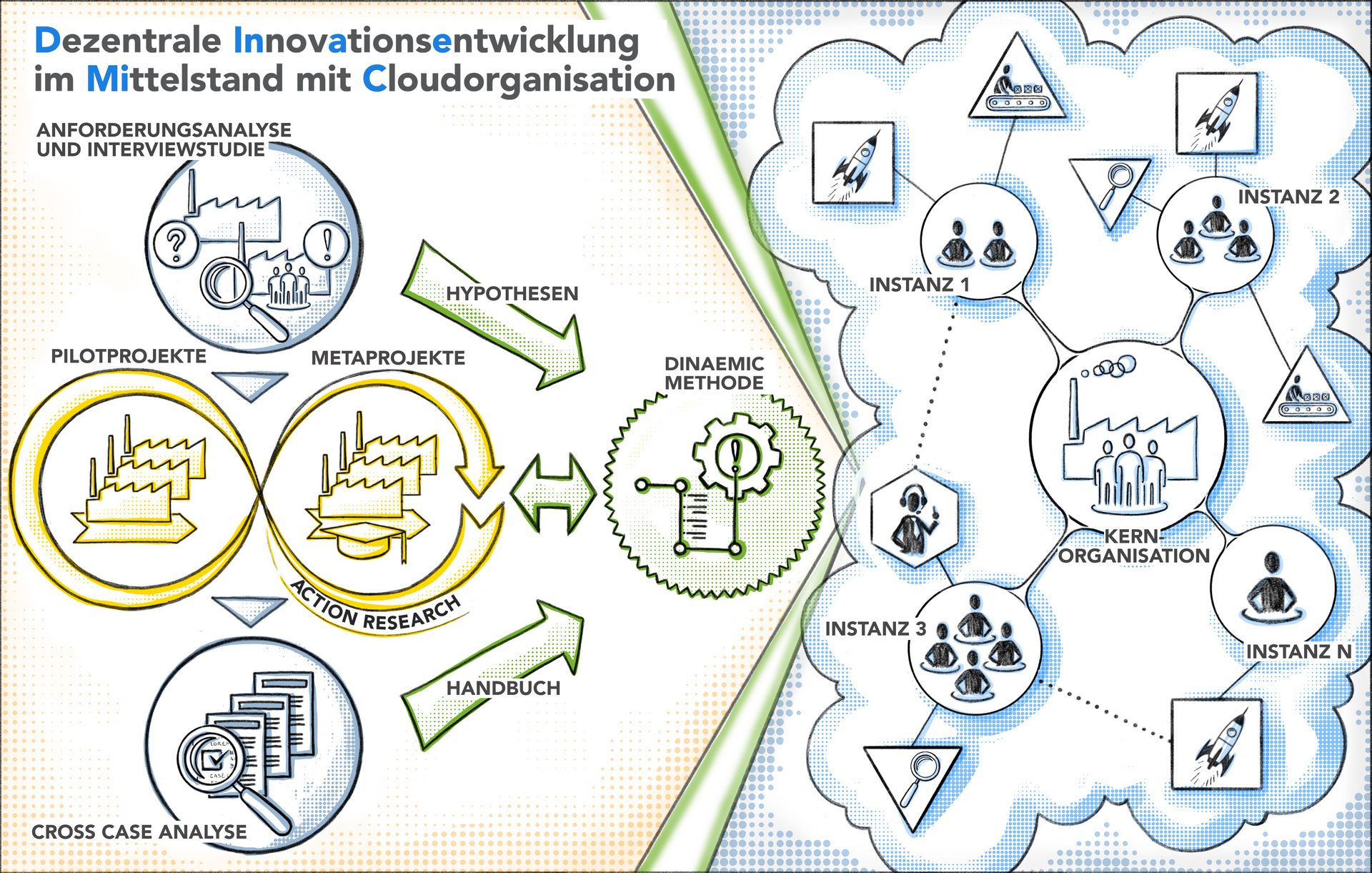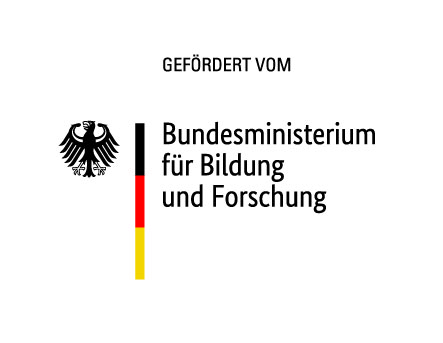The project goal
The goal of the project is to develop the DINAEMIC method, which can be used to design and implement new organizational forms for decentralized, entrepreneurial innovation development in SMEs. The organizational forms are based on the principles of a cloud architecture. Such a cloud organization enables companies to generate new knowledge and develop targeted innovations by means of decentralized corporate entrepreneurship (CE) activities. The method comprises three modules:
(1) Reference concept for the strategic planning of a cloud organization for decentralized innovation development
(2) Design guidelines for company-specific designs and strategies and
(3) Procedure models for the implementation of the DINAEMIC method. For and through the method development, new scientific findings will emerge on (a) dynamic capabilities in decentralized CE activities and (b) organizational theory by adapting the principles of a cloud architecture to the organizational context.
Our path to the goal
The development of the DINAEMIC method is based on the close cooperation of various medium-sized companies, large-scale industry, consulting firms and networks and on the iterative procedure of action research. Hypotheses for the design of the DINAEMIC method are developed from a requirements analysis of SMEs and the interview study on approaches from large-scale industry and validated in initial metaprojects with student start-up teams and companies as a test field. Feedback loops take place between the meta projects and the method design. The prototype of the DINAEMIC method will be tested in pilot projects in partner companies in the SME sector. Action Research accompanies and evaluates the pilot projects, which serves as input for the subsequent cross-case analysis. Based on the findings, the design of the DINAMIC method is finalized and described in a manual. The development of the method is scientifically supported and accompanied by a doctorate. The results can be shared and discussed with a wide audience via various events and publications.
Our methods
The research project is based on an action research approach, whereby the DINAEMIC method is developed by means of an iterative procedure and rapid feedback cycles. For this purpose, a qualitative research design is chosen that includes the following methods: semi-structured interviews for data collection in medium-sized and large companies; quantitative content analysis (grounded theory) to evaluate the interview data; participatory and non-participatory observations in, for example, the meta and pilot projects, group discussions and multi-perspective dialogues in order to evaluate the observations and findings in a larger section of reality. Case studies at micro and macro level evaluate the pilot projects. In this way, new findings are regularly generated from the pilot projects, which are incorporated into the further development of the DINAEMIC method via feedback cycles, expert panels and roundtables. Using a cross-case analysis, general characteristics and best practices can be derived on the basis of the case studies, interview data and discussion findings.


